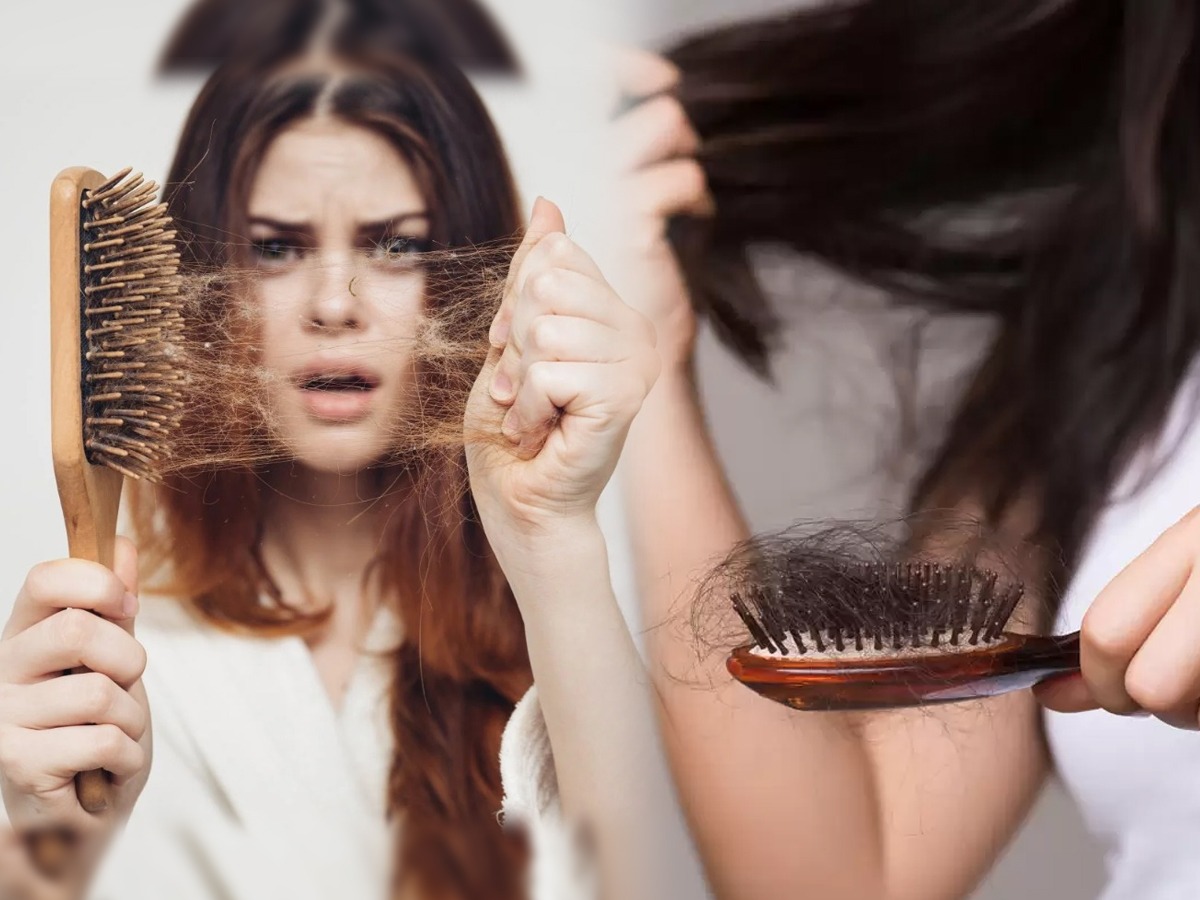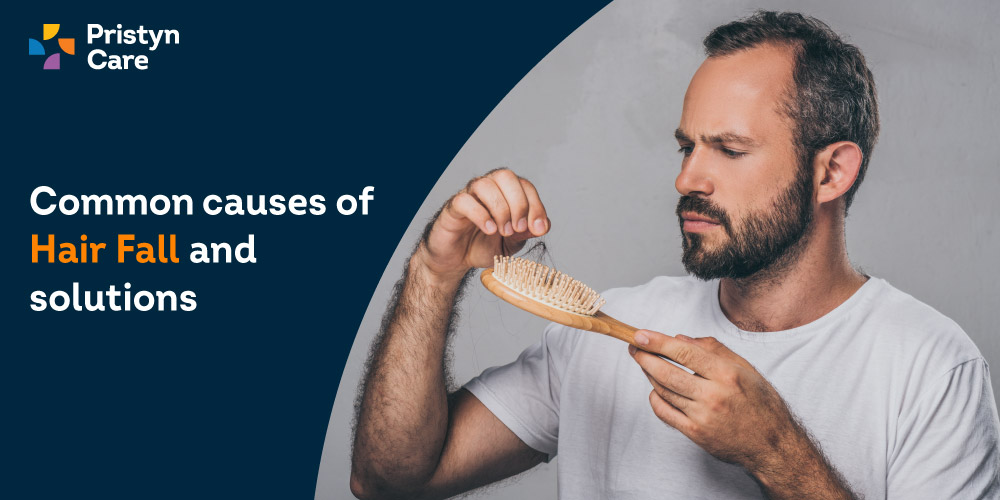Table Of Content

On some days, let your hair dry naturally and go for easy hairstyles like messy buns or basic braids. Insufficient intake of Vitamin B, protein, and iron can trigger hair loss. But the good news is you can easily get them from green leafy vegetables, red meat, and citrus fruits. Find out the possible causes so you'll know exactly what to do. The best way to know if you can stop hair loss is to get a proper diagnosis from a doctor.
Can hair loss in women be prevented?
Seasonal hair loss: What causes it and treatments to help - TODAY
Seasonal hair loss: What causes it and treatments to help.
Posted: Fri, 12 Apr 2024 07:00:00 GMT [source]
Conversely, this hormone change may also cause excessive hair growth on the face and chest. People with PCOS hair loss typically take the oral medication spironolactone to help regrowth. Hormonal birth control may also be prescribed to help lower testosterone levels causing hair loss. Hereditary hair loss, or androgenetic alopecia, is hair loss caused by genetics or hormonal imbalances that affect androgen hormones (typically testosterone). Anyone can experience hereditary hair loss, but it typically affects males and is more commonly called male pattern baldness.

Telogen effluvium
Left untreated, a sexually transmitted infection (STI) can lead to hair loss. Left untreated, syphilis can cause patchy hair loss on the scalp, eyebrows, beard, and elsewhere. If you receive chemotherapy or have radiation treatment to your head or neck, you may lose all (or most of) your hair within a few weeks of starting treatment. In women, the first noticeable sign of hereditary hair loss is usually overall thinning or a widening part. See a dermatologist as soon as possible when you notice hair loss. The sooner you get treatment, the more effective it’ll be.
Hair growth cycle
If ringworm does not heal by itself, a doctor may prescribe an antifungal medication such as griseofulvin. A doctor may recommend dietary changes and supplements to treat a nutritional deficiency. Hair from the scalp, as well as eyebrows and eyelashes, may fall out in small chunks. You'll soon start receiving the latest Mayo Clinic health information you requested in your inbox.
How do trees and green spaces enhance our health?
You apply this solution indefinitely, as results go away if you stop. Hormonal imbalances related to polycystic ovary syndrome (PCOS) and birth control can lead to hair loss. PCOS hair loss is caused by the ovaries overproducing extremely high levels of androgens, causing hair loss on the temples and front of the scalp.
Knowing the causes of hair fall and hair loss can definitely point you in the right direction. And if you incorporate these simple hair loss remedies into your lifestyle, your hair will be in better shape. You might have also heard people say that experiencing emotional stress can cause hair fall, which is true. Although these can raise your androgen levels that trigger hair fall, you can still beat it by getting enough rest and eating a healthy diet. It’s a good idea to see a doctor if your child is dealing with hair loss in order to get a proper diagnosis and rule out potential medical conditions.
Scalp massage with coconut oil:
The main symptom of alopecia is losing more hair than usual, but this can be harder to identify than you might think. For the purposes of this article, we use “male” and “female” to refer to a person’s sex assigned at birth. Hair tends to regrow on its own when the rubbing stops.
When should I call the doctor?
Alopecia areata is an autoimmune condition that is characterized by “round patches of hair loss on the scalp,” although it can occur elsewhere on the body, Agbai says. Minoxidil tends to be more effective when used along with another treatment for hair loss. Many people see some regrowth when using minoxidil, but it takes time to see results, usually about 6 to 12 months. With some types of hair loss, like androgenetic alopecia, the changes to the hair are permanent. While you can take steps to slow this process, the physical changes in your body make it difficult to stop losing hair entirely. The earlier you treat hair loss, the better the outcome.
Existing drug treatments
There are several types of hair loss, some are common and some are rarer, and each with different underlying causes. It’s typical to lose between 50 and 100 hairs a day, according to the American Academy of Dermatology (AAD). With about 100,000 hairs on your head, that small loss isn’t noticeable. New hair normally replaces the lost hair, but this doesn’t always happen. Poisons that can cause hair loss include arsenic, thallium, mercury, and lithium.
Hair may stop shedding when you stop taking the medication. If you believe medications are causing your hair to fall out, talk to your healthcare provider about changing dosages or finding an alternative medication. If your hair starts to thin or fall out in clumps, call your healthcare provider or dermatologist.
These treatments don’t usually affect your hair root, and your hair will likely grow back once you stop treatment. You’re most likely to develop pattern hair loss if you have close relatives who also developed it. Let’s look at a wide range of potential causes of hair loss in teenagers. Someone poisoned with arsenic, thallium, mercury, boric acid, and lithium can lose hair as a side effect.
Continuously coloring, perming, chemically relaxing, or heat styling can also damage hair and lead to hair thinning or loss. People may also lose hair when clothing rubs against the skin, which is known as frictional alopecia. Radiation therapy can also cause hair loss by damaging the hair follicles. The radiation dose can determine how much hair is lost or how permanent the hair loss is. Typically hair loss starts a few weeks after treatment.

Postpartum hormonal changes and stressors are more likely to cause hair to fall out. After giving birth, a drop in estrogen levels can cause hair to start excessively shedding. The stress and trauma of birth can also cause hair shedding. Postpartum hair loss is typically the most noticeable after four months, but hair often grows back to its usual thickness in a year. Your hair care or too-tight hairstyle could also be causing your hair loss. Some people who are otherwise healthy develop alopecia areata, a disease that can cause hair loss anywhere on their body.
As a result, hair doesn’t grow as long or thick as it normally would. In addition to losing hair on the scalp, some people with alopecia areata lose hair from their eyebrows, eyelashes, or other parts of the body. A healthcare provider will do a thorough examination and take a detailed history to understand changes in your hair growth. Your provider will also ask about what medications or supplements you currently take.
For most people, the lost hair grows back, and you maintain a full head of hair. But illness, hormonal changes, stress, aging and inherited conditions can interfere with your hair’s growth cycle. More hair falls out, but new strands don’t always grow back. Prescription medications, like finasteride (Propecia), may help prevent further androgenetic hair loss, especially for male pattern baldness. You take this medication daily to slow hair loss, though some experience new hair growth when taking finasteride. With age, most people notice some hair loss because hair growth slows.

No comments:
Post a Comment